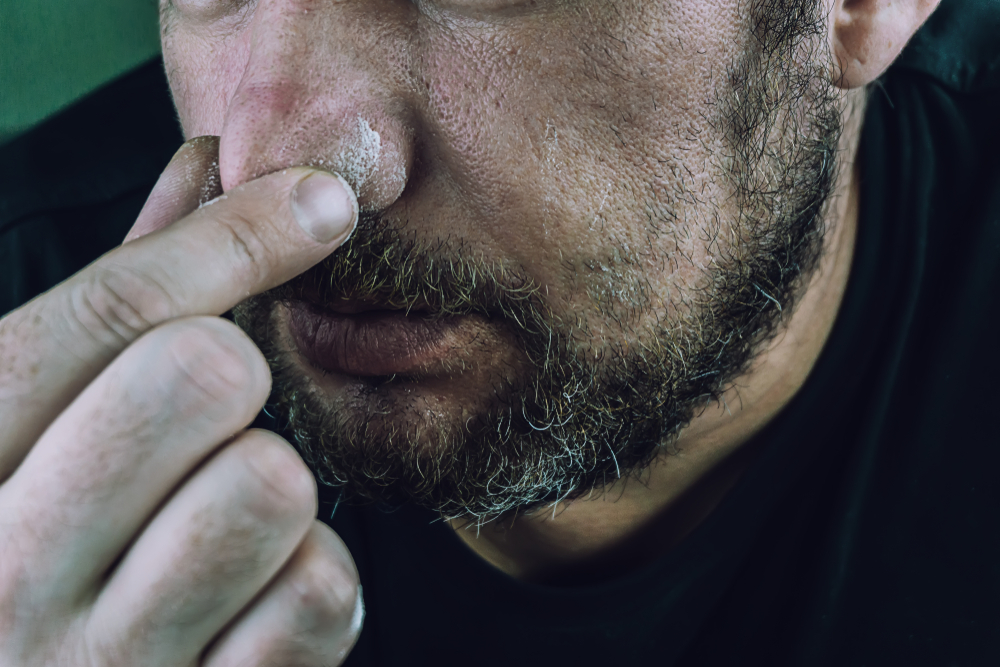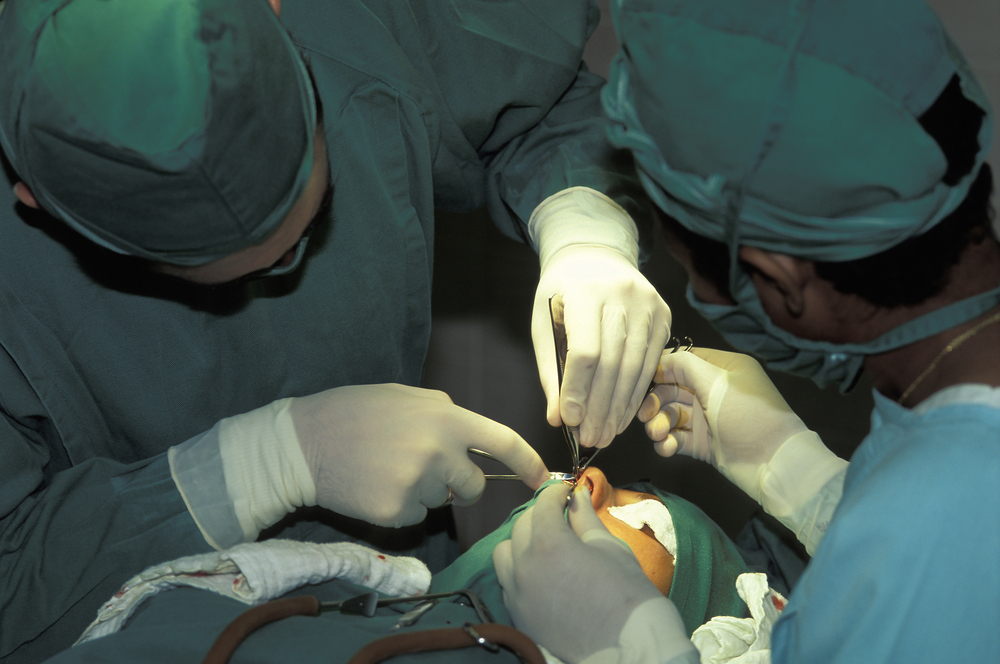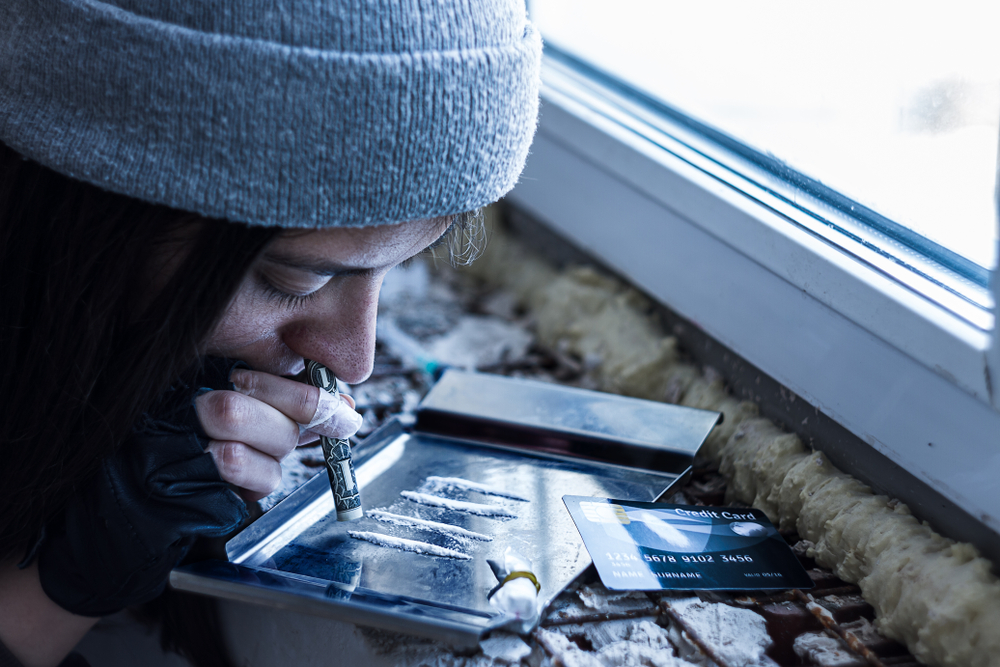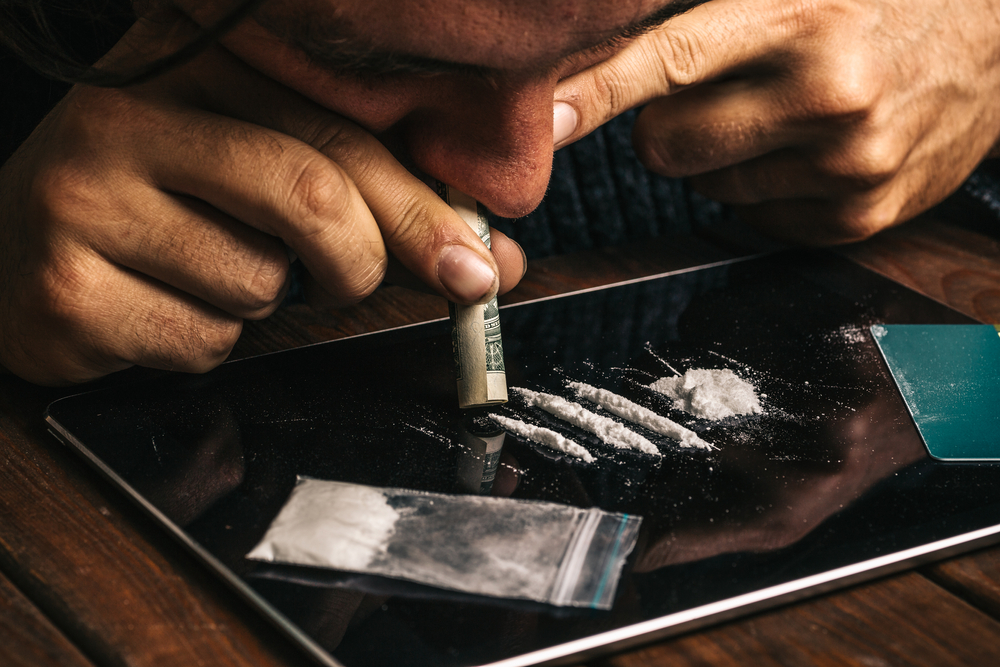Cocaine Nose: What is it and How Does it Happen?
The term “cocaine nose” refers to a collection of short-term or long-term cocaine-related nasal problems, ranging from chronic drippy nose to perforation of the septum and nasal septum decay.
Cocaine is a dangerous drug that is typically used recreationally. As a stimulant, cocaine creates a high and boosts mood and energy. These effects nurture dependence and eventually lead to the development of cocaine addiction. To prevent addiction, people who use cocaine should be informed of the different nasal problems it causes in addition to signs of cocaine abuse and available addiction treatments.
What is Cocaine Nose?
Cocaine addiction may lead to several problems in the nose, which is why it is known as cocaine nose. A vasoconstrictor like cocaine restricts the flow of blood to blood vessels to reduce their size and quantity. Because of the constrictor effect of cocaine, the amount of blood flow to the nose is severely reduced. Using cocaine frequently may cause damage to the nose’s structure and might even cause it to collapse, resulting in cosmetic and functional defects.

Signs of Nose Damage from Cocaine Use
Repeatedly constricting blood vessels in the nose over time leads to poor blood circulation, resulting in a fragile and susceptible nose lining. This may lead to nosebleeds caused by irritation or injury to the nose’s lining. In addition to damaging the nose’s lining, cocaine may also penetrate much deeper into the nose, resulting in more serious injuries. Common issues that arise from cocaine nose include:
Sinus Infections
There are several reasons why cocaine use may cause serious sinus infections. It limits blood flow to the sinuses, subverting the immune system’s ability to respond properly. In addition, snorting cocaine usually requires you to insert something into your nostril, which might be contaminated and cause an infection. Using cocaine can also cause physical injuries that make it easier for sinus infections to start. Sinus infections may seem minor and annoying, but an untreated sinus infection may lead to sepsis, a condition in which bacteria colonize your blood. Sepsis is a life-threatening condition that is frequently fatal.
Nose Bleeds
When taken just once, cocaine reduces the amount of blood flowing to membrane cells in the nose, preventing nosebleeds. When abused over a long period of time, cocaine causes the lining of the nose to become more fragile and bleed more easily, causing regular nosebleeds. Because cocaine causes progressive damage to the inside of the nose, cocaine nosebleeds are more serious than ordinary nosebleeds. The lining of the nose normally repairs itself, but if it cannot receive adequate blood flow, it may accumulate injuries that make it more susceptible to harm. As a result, these injuries are progressive

Perforated Septum
Using cocaine can cause septal damage, also known as a perforated septum. The septum, which divides both nostrils, is damaged by cocaine use, resulting in poor blood flow to the nose. As a result, the septum dies and rots, causing a hole or a deviated septum that plugs one nostril.
Breathing Issues
Cocaine can cause both mild and severe pulmonary problems. It constricts veins, arteries, and capillaries in the vascular system, which results in lung constriction. The hardening of the artery and cellular walls of organ tissues such as the lungs may occur as a result. Respiratory issues and even death may occur as a result of the hardening of these areas.
Hard Palate Damage
A hard palate injury is one of the more serious and unpleasant consequences of cocaine use. Your hard palate is the bone-lined hard part at the back of your mouth that separates your nasal cavity from your mouth. When cocaine is abused regularly, blood flow to the upper portion of the hard palate that lines the nasal cavity is impeded. This may cause a hole in the roof of your mouth over time. Your voice will sound weird and nasal food and drink will flow out of your mouth.
Saddle Nose
Because of the decreased blood flow that occurs after taking cocaine, the tissues inside the nose become dead and rotted, resulting in saddle nose. Because the outside of the nose isn’t adequately supported by the remaining healthy tissue, the bridge of the nose collapses and produces a deformity.
What Can You Do About Your Coke Nose?
The most effective method to assist your nose recover from cocaine damage is to discontinue taking cocaine. Regardless of what you do, your nostrils will not repair if you keep taking cocaine. If you have a cocaine dependency, you will most likely require professional assistance to stop doing so.
Cocaine addiction may require medical treatment to help your nose heal. If an infection is present, the nose will require medicinal care and antibiotics will be necessary to help the nose recover. If a septal defect, saddle nose, or tough palate is present, plastic surgery may be necessary. These defects rarely heal without assistance.
During and After a Cocaine Nose Procedure
Surgery for cocaine nose deformities can be accomplished in a variety of ways, ranging from simple outpatient rhinoplasty to technically demanding approaches for addressing large septal perforations, septal collapse, and nasal lining loss.
The best approach to restore nasal structure and function in the most severe deformities is to replace the mucosal lining with tissue from another part of the body. The mucosal lining (referred to as the “bat flap” owing to its unique shape) is customized to match the shape and dimensions of the normal nasal lining, which is then transferred to the inner surface of the nose via microsurgical techniques to replace the diseased mucosal lining. The cocaine-injured nose is corrected by improving the blood flow and providing a lasting solution by implanting the new lining flap. Cartilage grafts are positioned after the insertion to bolster the tissue and restore the form of the nose.

Patients may remain in the hospital for up to four days or longer following a microsurgical procedure. Usually, patients will be monitored in a specialized hospital unit for up to 24 hours to ensure that the new nasal lining flap circulates properly. Subsequent operations are usually performed on an outpatient basis. After the operation, patients may benefit from one or two additional surgical procedures to improve the shape of their nose and improve airflow through their new nasal lining.
It is common for swelling and bruising to occur after reconstructive surgery, but these symptoms usually dissipate within 1-2 weeks. In addition to infection, any surgical procedure carries the danger of injury, and this risk is particularly elevated in cocaine nose. If the patient continues to use the drug after the operation, the harm to their new nose may be more severe than it was before, making surgical treatment nearly impossible.
Signs of Cocaine Addiction
In addition to affecting the brain, cocaine affects every part of the body due to its presence in the blood. Cocaine is the leading cause of emergency room visits in the United States, accounting for more than any other illegal drug. Cocaine damages the brain, heart, blood vessels, and lungs, sometimes resulting in sudden death. Depending on the length of addiction, the frequency of use, and the level of physical dependency, the symptoms of cocaine abuse and addiction may differ. The following are the most common symptoms of cocaine addiction:
- Anxiety
- Euphoria
- Increased heart rate
- Mood swings
- Depression
- Isolation
- Neglecting responsibilities
- Weight loss
- Restlessness
- Legal issues
- Financial trouble
- Increased sex drive
- Loss of smell
- Irritability
- Aggression
- Chronic runny nose
- Frequent nose bleeds

Cocaine Addiction Treatment at Oasis Recovery Center
Even if you stop taking cocaine, it’s still possible to suffer from its ongoing consequences like cocaine nose. Fortunately, with the help of Oasis Recovery, you can achieve sobriety.
By utilizing various behavioral therapies and science-backed treatments, the professionals at Oasis Recovery Center can help you lead a life free from addiction and its many detrimental effects. You are not alone, no matter what your situation may be. You have the strength to overcome your addiction. Many people have been able to conquer their cocaine addiction and you can, too. Make your first move toward sobriety today by contacting a treatment specialist. We are in this together.









